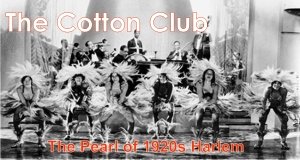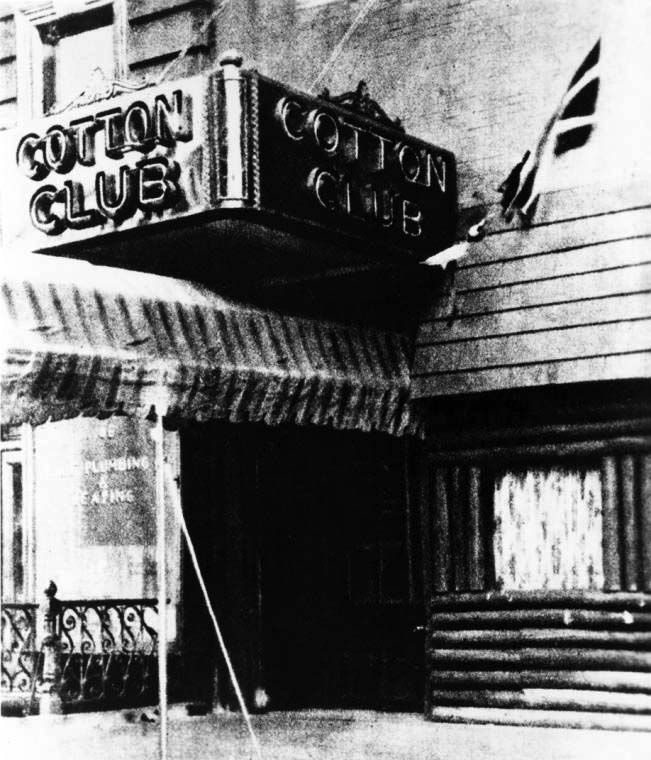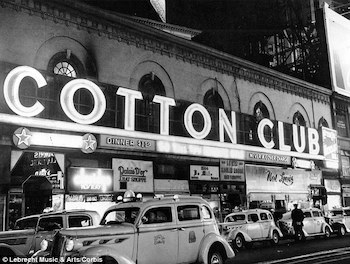As with many New York City clubs of the time period that meant the upper class of the city. The chorus girls were.

Part 2 Most Of The Patrons Of The Cotton Club Were Brainly Com
Owney Madden a white gangster took over.

. Over 56 and light skinned and under the age of 21. Opened in 1923 the renowned club was located in the heart of Harlem New York and that for years featured famous black entertainers who performed for white-only audiences. And over 60 more were injured.
The Club was decorated with the idea of creating a stylish plantation environment for its entirely white clientele. Since then the Cotton Club name has been appropriated by nightclubs around the world including a re-creation of the original club in. The Cotton Club Harlems most prominent nightclub during the Prohibiton era delivered some of the greatest music legends of the Jazz Age Duke Ellington Cab Calloway Fletcher Henderson Ethel Waters the Nicolas Brothers.
The Cotton Club at first excluded all but white patrons although the entertainers and most of staff were African American. Explore the history of the Cotton Club meet its most illustrious performers and learn about the Harlem Renaissance. Today I am going to talk to you about one of the most popular clubs in New York during the 1920s the Cotton Club.
History of the Cotton Club. The Cotton Clubs white patrons felt the. The Cotton Club at first excluded all but white patrons although the entertainers and most of staff were African American.
To complete the theme only African-American entertainers could perform there while only white clientele with few exceptions were allowed to patronize the establishment. A limited number of white entertainment guest stars and dancers were permitted to participate. For many white patrons the Cotton Club was their first opportunity to listen to jazz and blues.
Despite its reputation as a glamorous and good looking club black patrons were not allowed inside. It was run by the infamous white gangster. In 1920 heavyweight boxing champion Jack Johnson rented the upper floor of the building on the corner of 142nd Street and Lenox Avenue in the heart of Harlem and opened an intimate supper club called the Club Deluxe.
The Cotton Clubs best years were from 1922 to 1935. The Club was decorated with the idea of creating a stylish plantation environment for its entirely white clientele. YOU MIGHT ALSO LIKE.
In 1920 Jack Johnson the first African-American heavyweight boxing champion opened the Club Deluxe on 142nd Street and Lenox Avenue in the center of Harlem. 64b2dc44e8245524 The Cotton Club became one of the most popular and hottest nighclubs in. The Cotton Club was Harlems most famous nightclub in the 1920s and 1930s during the Prohibition eraAmong the most accomplished African-American musicians at this club were Basie Fitzgerald Waller Armstrong Gillespie King Cole.
Although most of the staff is African American and the entertainers are African American the Cotton Club initially excluding most white patrons. It is discussed in the 2001 Ken Burns PBS documentary Jazz. As with many New York City clubs of the time period that meant the upper class of the city.
US history unit 3. The Cotton Club Harlems most prominent nightclub during the Prohibiton era delivered some of the greatest music legends of the Jazz Age Duke Ellington Cab Calloway Fletcher Henderson Ethel Waters the Nicolas BrothersSome of the most iconic songs in the American songbook made their debut at the Cotton Club or were popularized in performances. This attracted high-powered.
The Riot of 1935 and the Move Downtown The Cotton Club was still flourishing in Harlem during the. Some of the most iconic songs in the American songbook made their debut at the Cotton Club or were popularized in. If you were around in New York Citys Harlem neighborhood in the 1920s the hot-spot was the Cotton Club.
A film was created about the cotton club so it was reopened today and still is but all audiences and performers are allowed. The Cotton Club is a movie directed by Francis Ford Coppola which offers a playboy history of the club in the context of race relations in the 1930s and the battles between Madden Dutch Schultz Vincent Mad Dog Coll Lucky Luciano and Ellsworth Bumpy Johnson. One of the best speakeasies in Harlem was the Cotton Club a place that intended to have the look and feel of a luxurious Southern plantation.
Following the Harlem riots of 1935 the establishment moved to West 48th Street but the club never regained its earlier success and was closed in 1940. Owney Madden a prominent bootlegger and gangster took over the club after his release from Sing Singin 1923 and changed its name to the Cotton Club.

Harlem Renaissance Cotton Club


0 Comments